If you’ve ever noticed water dripping from your furnace, you may have wondered where it’s coming from. While it’s common for water to drip from the air conditioning unit, many people don’t realize that the furnace can also produce condensation. In this post, we’ll explain what the flue is and how to fix furnace flue condensation. We’ll also show you how to prevent this problem from happening in the future. Let’s get started!
As winter sets in, many homeowners are faced with the challenge of fixing furnace flue condensation. This can be a tricky problem to solve, but with the right information, it’s doable. Below there, we’ll walk you through the steps to fixing furnace flue condensation, so you can stay warm and cozy all season long. Thanks for reading!
Summary: A furnace flue can become clogged with dust and other debris over time, leading to condensation on the metal surface. This condensation can eventually freeze and cause damage to the furnace. Here are some tips for fixing furnace flue condensation: 1. Clean the flue regularly using a brush and cleaning chemicals or a vacuum cleaner. 2. Remove any large pieces of debris that may have built up over time. 3. Make sure the furnace is properly vented, and if necessary, install a new flue liner. 4. Use a heating ventilator to help remove moisture from the air.
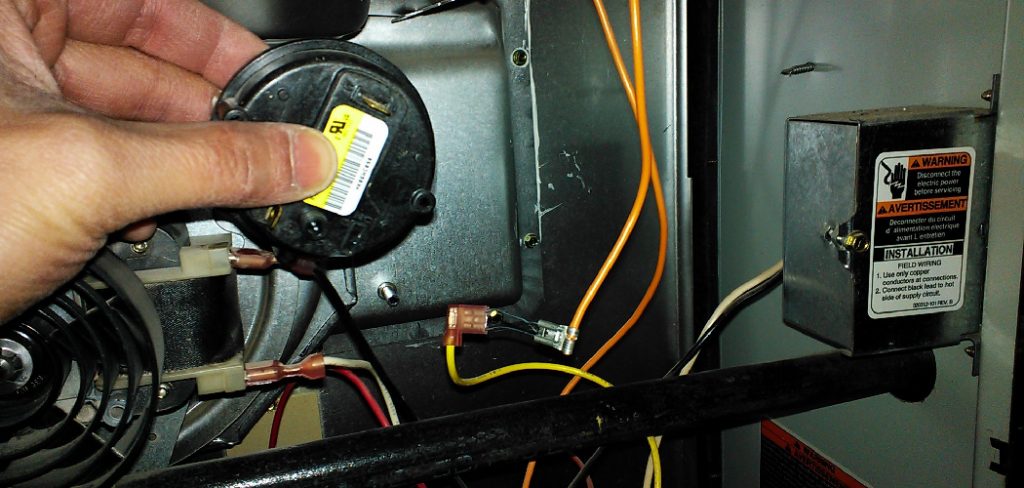
What Causes Furnace Flue Condensation?
There are many different causes of furnace flue condensation, but some of the main factors contribute to this problem. Such as:
1. Improper Air Circulation
When a furnace is installed, the room needs to be pressurized. If this step is skipped, improperly sealing the room could cause condensation on the flue pipe. It also could negatively affect the overall efficiency of the furnace, as well as cause other issues like damage to walls and windows.
2. Improper Ventilation
Inadequate airflow and poor air exchange in a home can also contribute to furnace flue condensation. The buildup of humidity and moisture in the air can cause condensation on the flue pipe, which is why proper ventilation of a home is so important.
3. Dirty Air Filter
If your furnace isn’t functioning properly, it may be due to a dirty air filter that needs to be changed regularly. A clogged air filter will not allow enough heated or cooled air to circulate throughout your home, which can lead to condensation on the flue pipe.
4. Vents Stuck Open
If a vent is stuck open, it could negatively affect your overall heating and/or cooling system by interfering with air circulation and causing more humidity in the air. This humidity can then contribute to furnace flue condensation by causing water droplets to form on the pipe.
5. Poorly Maintained Appliances
Appliances that are not properly maintained and continue to run without maintenance can also lead to condensation on your flue pipe. This is because they often have vents that are not sealed tightly, which allows moisture and humidity into the air.
10 Ways About How to Fix Furnace Flue Condensation
1. Address Air Pressure Issues
One possible cause of furnace flue condensation is a change in air pressure within your system. If there is more air pressure inside the furnace flue than outside, this will cause condensation to form.
2. Adjusting Ventilation
Another common cause of furnace flue condensation is improper ventilation in your home or building. If too much moisture enters your system, it can collect on the insides of the flue, leading to condensation.
3. Check the Damper
If your system has a damper installed in it, this is something else to check if you are dealing with furnace flue condensation issues. If the damper is not properly sealed or there is a leak present, moisture can enter the system and cause condensation to form.
4. Check the Furnace Flue
Your furnace flue itself can also be a source of condensation if it is not properly sealed or insulated. If this is the case, you will need to seal any cracks and gaps in your system and make sure that the insulating material has not worn out or become damaged over time.
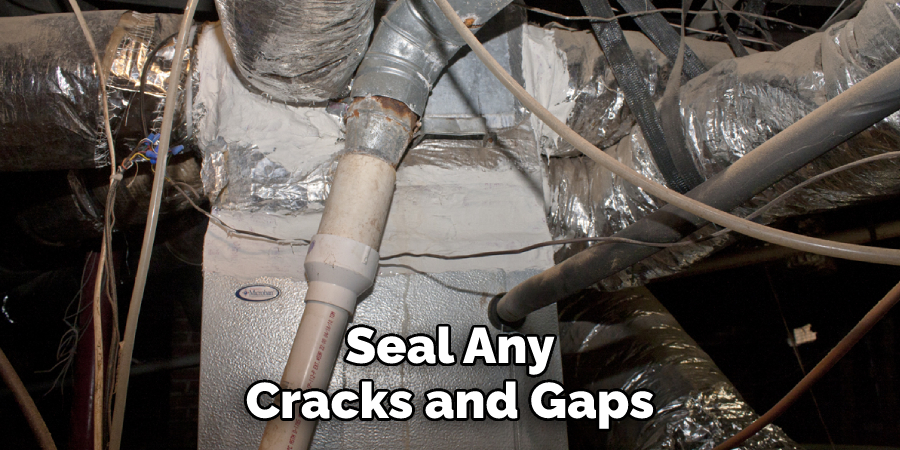
5. Check the Ductwork
If moisture is getting into your ductwork, this can also cause furnace flue condensation to form. If this is the case, you will need to check your ducts for any cracks or leaks that might be present and make sure they are properly sealed and insulated so that none of this moisture can enter.
6. Check the Air Filter
If your furnace flue condensation problems seem to be getting worse over time, it may be a good idea to check the air filter in your system. If this is dirty or clogged, airflow may be reduced, and moisture can build up in the system more easily.
7. Check the Venting
Your venting can also be a source of condensation if it is damaged or incorrectly installed. If this is the case, you will need to replace or repair any damage that might be present and make sure that your vents are properly sealed so that moisture cannot enter.
8. Check the Thermostat
If your thermostat is not properly calibrated or not functioning as it should, this can also lead to furnace flue condensation issues. If you notice that your system is having problems with condensation and suspect that it might be tied to this factor, check your thermostat settings and make sure that it is working properly.
9. Check the Chimney
If your furnace flue has a chimney attached to it, this can also be a source of condensation if it is damaged or poorly installed. If you suspect that this might be an issue in your system, check your chimney for any damage or gaps and make sure that it is properly sealed to prevent moisture from entering.
10. Call a Professional
If you are struggling with furnace flue condensation and have tried all of the above methods without success, it may be time to call in a professional to inspect your system and help you address this issue once and for all. A good HVAC professional can help you identify the root cause of your condensation problems and provide expert advice and guidance for fixing them.
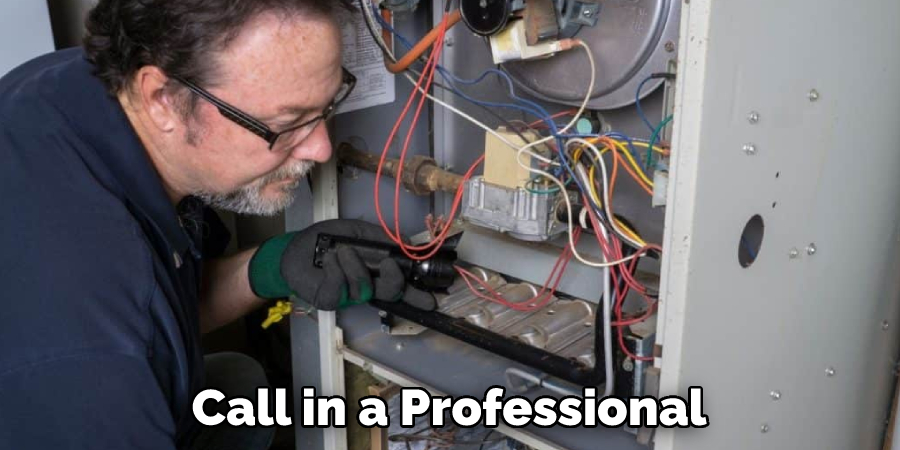
Some Tips to Prevent Furnace Flue Condensation
1. Do Not Block the Exhaust Fumes
Keep the area around the back of your furnace clear of just about anything, including furniture or boxes. This will ensure that the exhaust fumes have an unobstructed route to escape into the outside world.
2. Inspect the Damper on Exhaust Pipe
If you find your furnace suddenly has condensation problems after installing a new damper, chances are it is not properly installed or working. Also, makes sure that it closes tightly to prevent air leaks.
3. Make Sure the Flue is Clean
Dirty flues can cause moisture to condense inside them, so make sure yours is clean and clear of debris. Use a scraping tool to break up stubborn dirt and then wash it out thoroughly with a garden hose.
4. Adjust Air Flow
If your furnace is having issues even after you’ve done all of the above, try adjusting airflow through your furnace. Adjustments to the airflow could help any excess moisture make its way out of your exhaust flue without condensing inside and causing damage.
5. Have Your Furnace Inspected and Serviced Annually
Finally, even if you do everything else right, it is a good idea to have your furnace inspected annually by a professional in order to catch any potential issues before they become too severe.
If you are worried about your furnace’s flue condensation and have tried all of the above steps with no success, contact a furnace repair specialist for help.
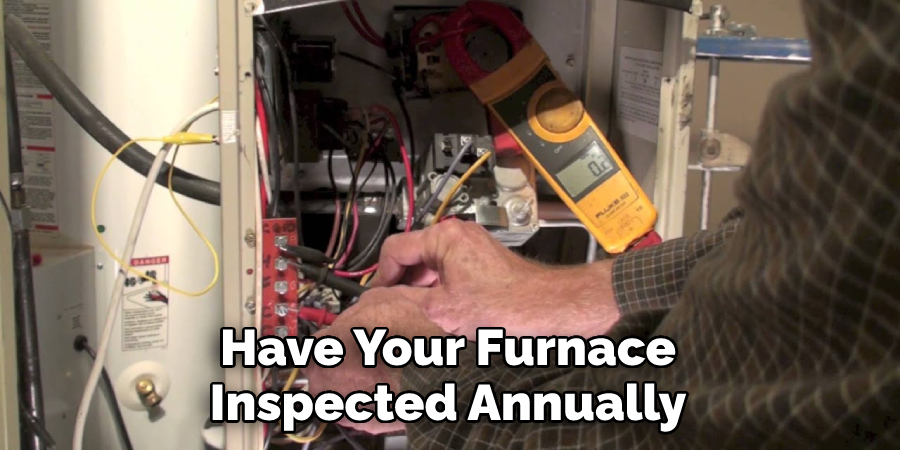
Frequently Asked Questions
Why is There Condensation in My Furnace Exhaust Pipe?
There are several reasons why you might see condensation inside your furnace exhaust pipe or flue. One of the most common causes is improper ventilation in your home. If there is not enough fresh air coming into your house, it can create a negative pressure that pulls humid air inside from other sources, such as your attic or crawlspace. This can cause condensation buildup in your furnace flue.
Why is My Furnace Sweating?
A common cause of furnace condensation buildup is if the flue has a build-up of creosote, soot, or other pollutants. These substances can make it difficult for the exhaust to escape, which causes it to cool down and condense on your pipes and ductwork.
Is There A Leak in My Furnace Flue?
A leak in your furnace flue can also cause condensation to build up, especially if the leak is allowing humid air into your home. To check for leaks in your flue, you should have a professional inspect it and perform any necessary repairs.
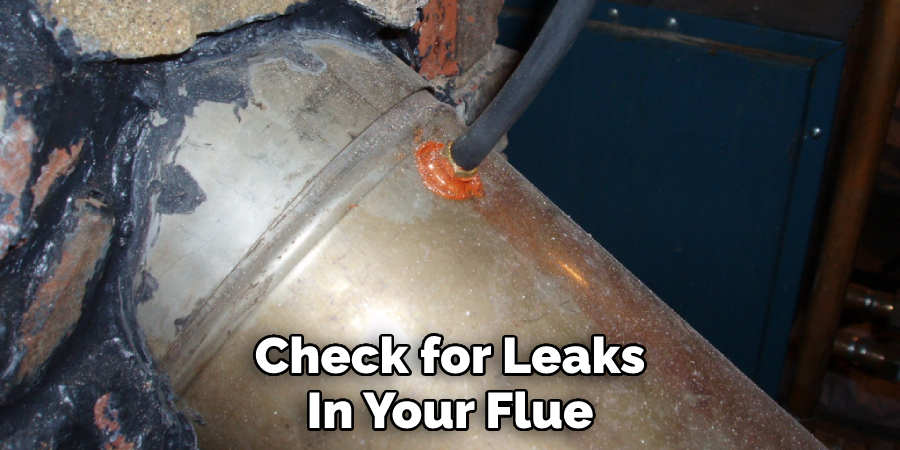
Conclusion
If your furnace is showing signs of flue condensation, don’t ignore the problem. Acting quickly can help extend the life of your furnace and prevent further damage to your home. Use this guide about how to fix furnace flue condensation to troubleshoot the issue and fix it quickly and easily.
Most of the time, simply cleaning the flue tubes will solve your condensation problem. If you still have questions or concerns about Furnace Flue Condensation, please reach out to a qualified heating and cooling professional in your area. They will be able to help you troubleshoot the issue and find a resolution that works for your specific system.
